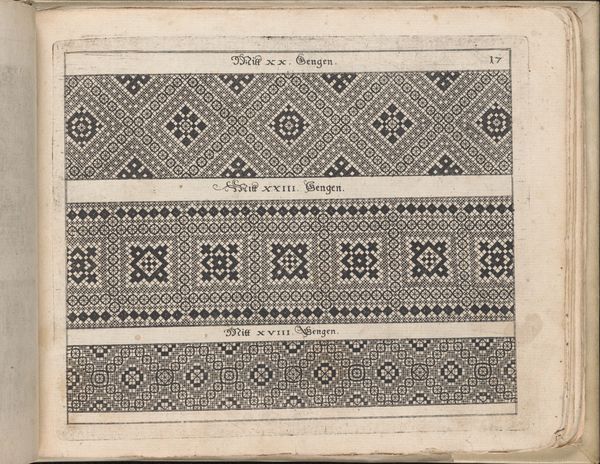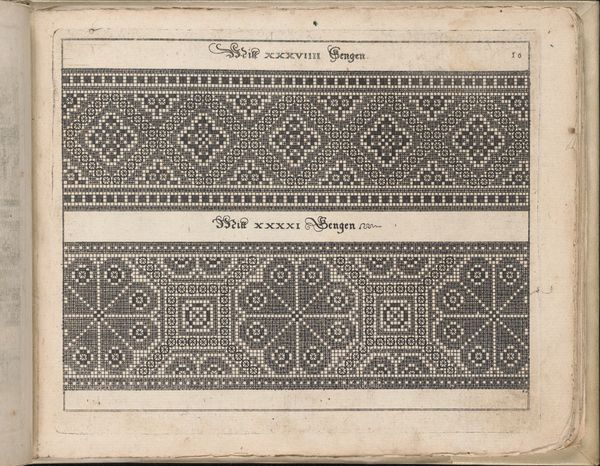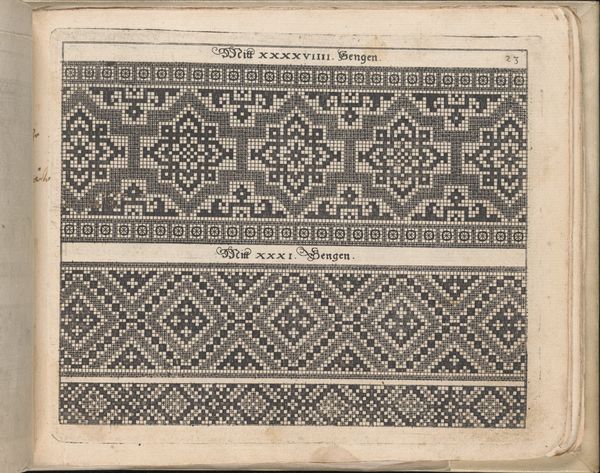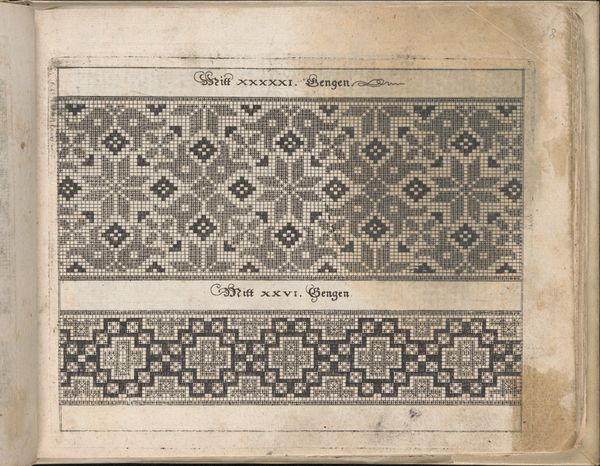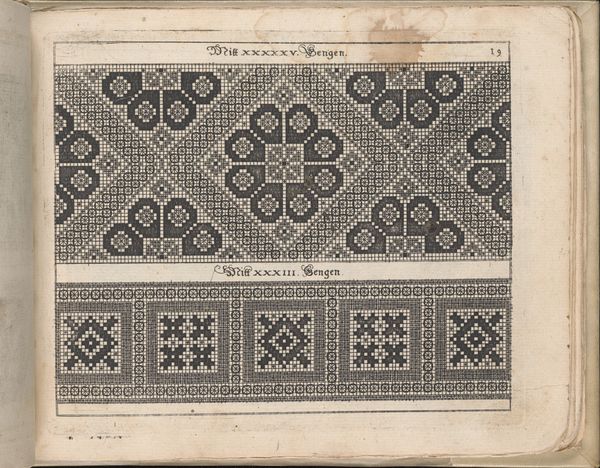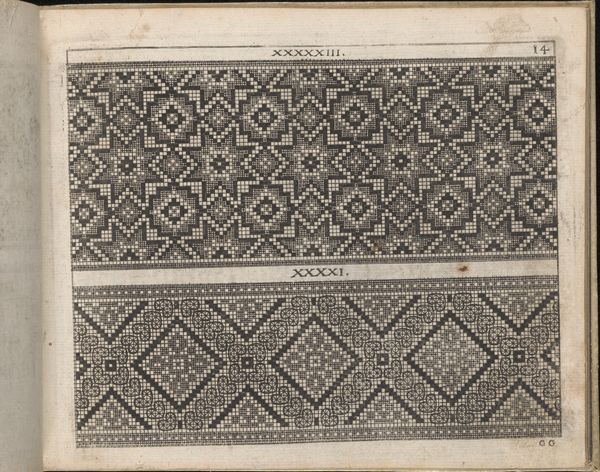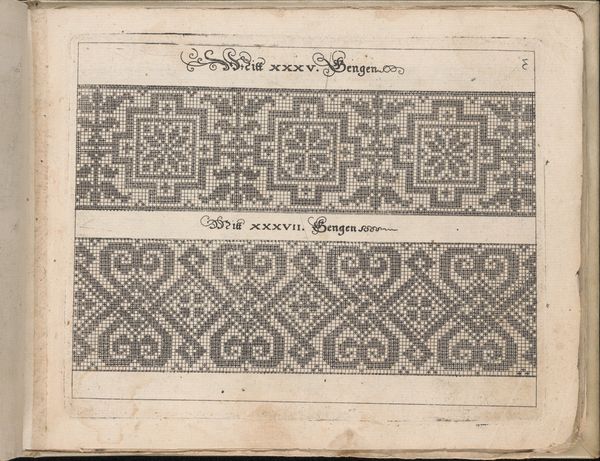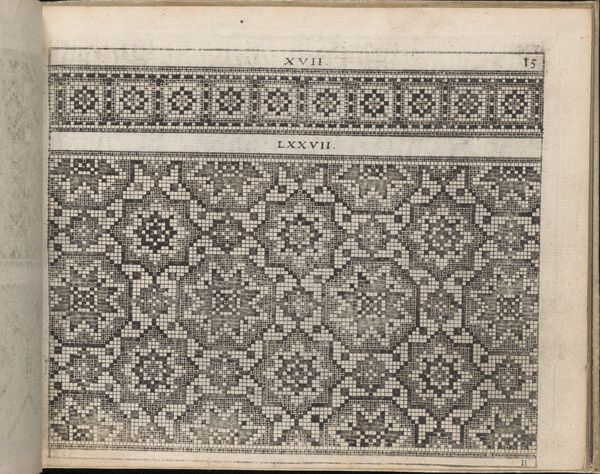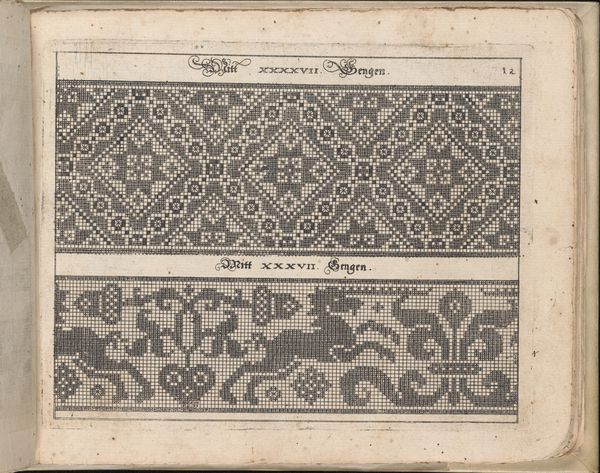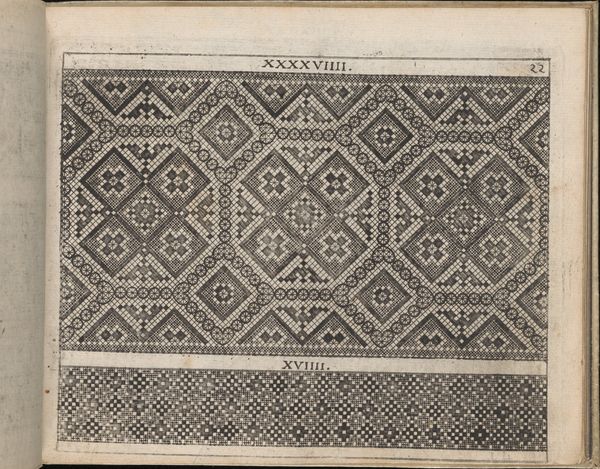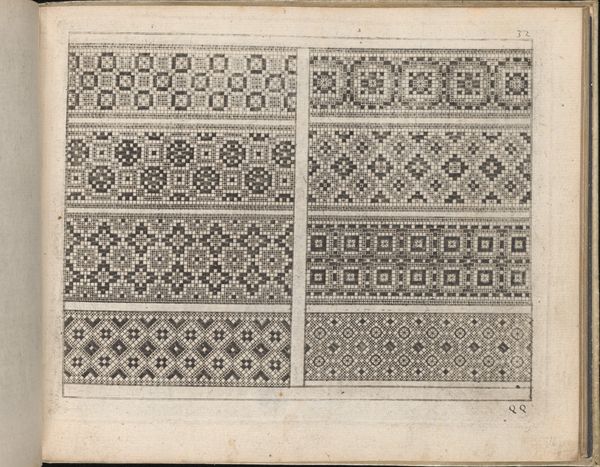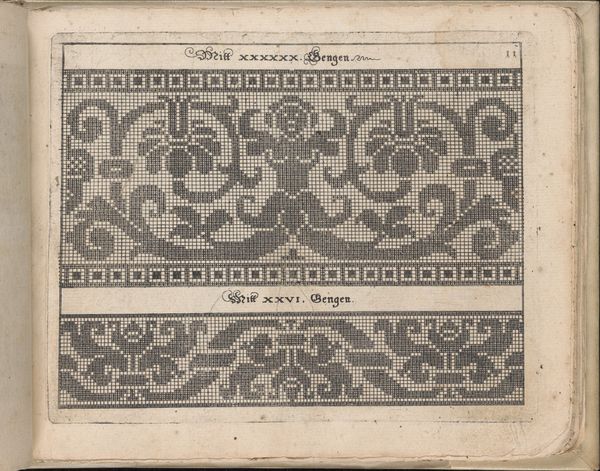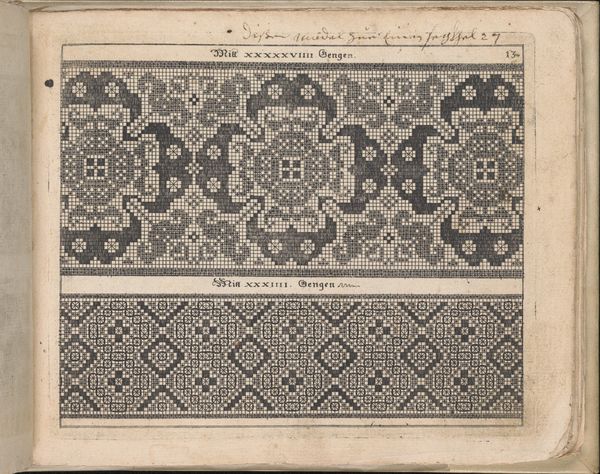
ornament, print, ink, engraving
#
ornament
# print
#
book
#
ink
#
geometric
#
northern-renaissance
#
engraving
Dimensions: Overall: 6 1/8 x 7 13/16 in. (15.5 x 19.8 cm)
Copyright: Public Domain
Editor: So, this is "Schön Neues Modelbuch (Page 26 recto)" from 1597, by Johann Sibmacher. It's an engraving of textile patterns from a model book. It's so intricate and precise. I'm immediately drawn to how these geometric patterns were meant to be guides, blueprints almost. What's striking to you about its function in its time? Curator: That's a good starting point. These model books were instrumental in the standardization and dissemination of design. Prior to mass production, how did artisans share ideas? These books played a critical role, allowing for pattern and styles to travel, influencing not just textiles but also other crafts and even architectural ornamentation. The book itself, then, becomes an active agent in shaping visual culture. Think of it as pre-internet Pinterest! Does knowing that alter your initial perception of the work? Editor: Definitely! I hadn't thought of it as a tool for democratizing design. I guess I was thinking of "art" with a capital "A," rather than a practical guide. Curator: And that distinction – art versus craft, high versus low culture – is a historically constructed one, isn't it? In the late 16th century, the idea of "art for art's sake" was still developing. Practical design was considered essential, not separate. Moreover, these pattern books allowed women, who were often the embroiderers, to participate in economic exchange. Can you see how that intersects with notions of gender roles and power? Editor: I see your point. So the circulation of the book created a bigger context for design production by impacting artisans and gender roles at the time? It makes me wonder who was buying them? Curator: Precisely! The intended audience included workshop masters, merchants, and likely wealthy amateur needleworkers. Owning this book signaled a certain status, providing access to the latest styles and techniques. That interplay between access, utility, and status…it’s at the core of understanding the Modelbuch’s place in the visual landscape of the Northern Renaissance. Editor: This was incredibly helpful. It’s changed how I see these designs completely – now seeing them as less decorative and more about broader social dynamics and empowerment! Curator: Absolutely. It highlights how objects like these aren't simply aesthetic but reflect social, economic, and even gendered relationships of power within their historical contexts.
Comments
No comments
Be the first to comment and join the conversation on the ultimate creative platform.
